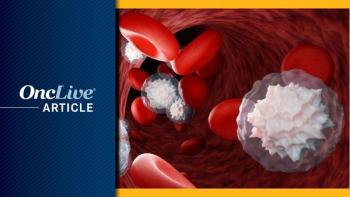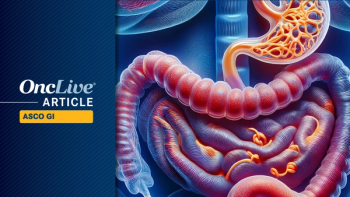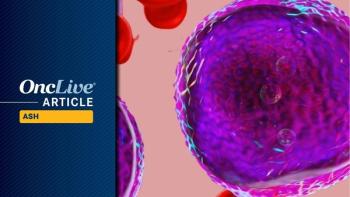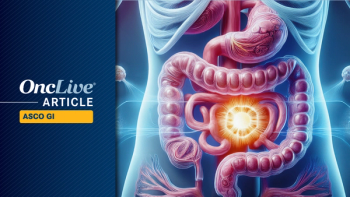
Venetoclax Sparks High Response Rate in Poor-Risk CLL Subtype
Venetoclax, demonstrated an overall response rate of nearly 80% among patients with chronic lymphocytic leukemia harboring the chromosome 17p deletion.
Stephan Stilgenbauer, MD
Venetoclax, a novel drug that inhibits BCL-2, demonstrated an overall response rate (ORR) of nearly 80% among patients with chronic lymphocytic leukemia (CLL) harboring the chromosome 17p deletion, marking a promising new treatment option for patients with a poor prognosis, according to research presented at the 2015 ASH Annual Meeting.1
The results of the phase II clinical trial have been submitted as part of new drug applications to the FDA and the European Medicines Agency, according to the pharmaceutical companies developing the drug. In May 2015, the FDA designated venetoclax as a breakthrough therapy for patients with del17p CLL.
Overall, 79.4% of the 107 patients evaluated in the clinical trial responded to venetoclax monotherapy according to the independent review committee evaluation, including 8 patients (7.5%) with a complete response (CR) or a CR with incomplete marrow recovery (CRi). Of 45 patients evaluated for minimal residual disease (MRD), 18 attained MRD-negative status in their peripheral blood.
“Based on these data, Venetoclax may be an attractive component to incorporate into novel combinations or to sequence in patients with this very high-risk disease characterized by 17p deletion,” said lead study author Stephan Stilgenbauer, MD, of the University of Ulm, Germany, who discussed the findings during a press briefing.
Stilgenbauer put the findings into the context of the patients treated during the study. “This is a very special population with a dismal outcome,” he said. Typically, patients with 17p deletion CLL have a median progression-free survival (PFS) of less than 12 months with frontline chemoimmunotherapy.
The pivotal trial data were released at the same time that results of a phase I dose-escalation study into venetoclax among patients with CLL was published in The New England Journal of Medicine.2 In this study, the ORR was 79% with venetoclax among 116 patients treated during the study, including a CR in 20% of participants. The 15-month PFS estimate for patients who received the highest dose of 400 mg per day was 69%.
All participants in that study had relapsed CLL and more than one-third were refractory to their last treatment, but the study was not restricted to patients with 17p deletion.
In the research presented at ASH, the patient population had a median age of 67 years (37-85 years) and had received a median number of 2 prior regimens (1-10). Many of the patients were refractory to fludarabine and bendamustine therapy.
Patients with relapsed/refractory del17p CLL received venetoclax once daily with a weekly dose ramp-up schedule (20, 50, 100, 200, 400 mg) over a period of five weeks with tumor lysis syndrome prophylaxis. Patients were treated with daily 400 mg venetoclax dosed continuously until disease progression or discontinuation. As of the interim data cut-off, (April 30, 2015) the median time on study was 12.1 months (range, 0.3-21.5).
Stilgenbauer said one of the most noteworthy outcomes of the study was the impact of venetoclax on the change in absolute lymphocyte count among participants. Only 4 of the 87 patients with baseline lymphocytosis did not normalize to <4x10.9 In addition, the median time to normalization was 22 days (range 2-122).
He also said that responses are still evolving. The median time to first response was 0.8 months (0.1-8.1 months) and the median time to CR/CRi was 8.2 months (3.0-16.3 months).
In the realm of adverse events (AEs), Stilgenbauer said patients treated with venetoclax during the trial experienced AEs that were comparable to or less prevalent than those experienced by individuals receiving frontline chemotherapy.
Ninety-six percent of 103 evaluable patients experienced a treatment-emergent AE of any grade, including 76% with grade 3/4 events. The most common all-grade AEs included neutropenia (43%), diarrhea (29%), and nausea (29%).
Infections occurred in a total of 77 patients (72%), but there were only 16 patients (15%) who had upper respiratory tract infections of any grade including only 2 patients (2%) with grade 3/4 infections. Stilgenbauer said it was “reassuring” that respiratory infections were uncommon and that the overall infection rate was “lower than expected in this high-risk population.”
AbbVie sponsored the venetoclax study in collaboration with Genentech/Roche.
References
- Stilgenbauer S, Eichhorst BF, Schetelig JS, et al. Venetoclax (ABT-199/GDC-0199) monotherapy induces deep remissions, including complete remission and undetectable MRD, in ultra-high risk relapsed/refractory chronic lymphocytic leukemia with 17p deletion: results of the pivotal international phase II study. Presented at: 57th American Society of Hematology Annual Meeting; Orlando, Florida; December 5-8, 2015. Abstract LBA6.
- Roberts AW, Davids MS, Pagel JM, et al. Targeting BCL2 with venetoclax in relapsed chronic lymphocytic leukemia [published online December 6, 2015]. N Eng J Med. doi:10.1056/NEJMoa1513257.
<<<

























































































